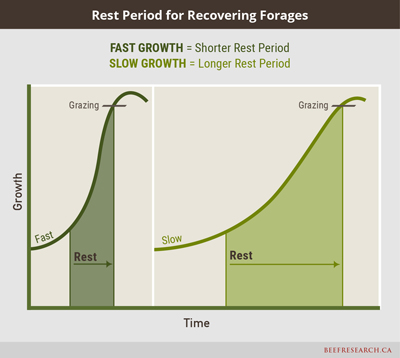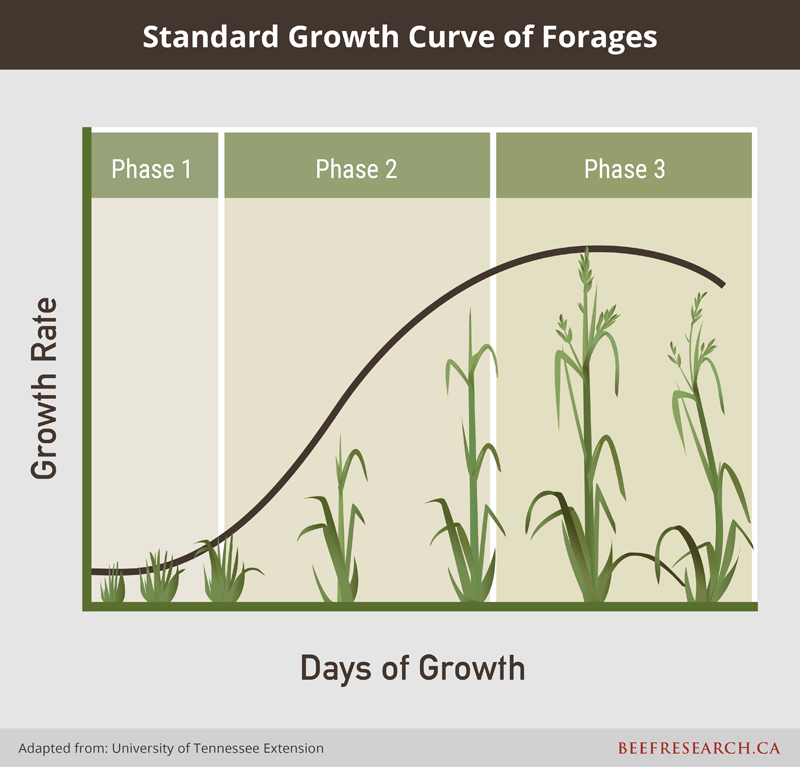Grazing Management
Remarque : cette page web n’est actuellement disponible qu’en anglais.
Editor’s note: Relevant and up-to-date information that had been available on Foragebeef.ca is gradually being added to BeefResearch.ca. (More information). The new Grazing Management webpage, which is previewed below, is one example. Further webpages will be added or updated on BeefResearch.ca to include the valuable content from Foragebeef.ca, ensuring that information remains freely available online. Completion is expected by Spring 2020.
Effective grazing management on pastures not only ensures high forage yield, sustainability, animal health and productivity, all of which impact cost of production, it also benefits the pasture ecosystem. Innovations in pasture management give producers greater control to support the environment (e.g. biodiversity) but also allow them to better use pasture resources for food production.
Pasture is a critical resource in the cattle industry. An effective management plan requires clear understanding of forage production, realistic production goals, effective grazing strategies and timely response to forage availability and environmental changes. Managing grazing lands so that they are productive and persist over time requires knowing when to graze certain species, if they can withstand multiple grazings/cuttings within a single year and how much recovery time is needed to prevent overgrazing.

The efficiency with which plants convert the sun’s energy into green leaves and the ability of animals to harvest and use energy from those leaves depends on the phase of growth of the plants. Plants go through three phases of growth that form an “S” shaped curve. The timing of the growth curve for each forage species is unique and these growth characteristics are an important factor in determining proper season of use for grazing. For example, crested wheatgrass begins growth relatively early in the growing season while native grass species grow later in the season.
Rest is key to prevent overgrazing and must occur when the plants are actively growing, not during dormancy. The length of time that a plant needs to recover following grazing depends on several factors including the type of forage species, plant vigour, and the level of utilization. Recovery time also depends on the season or time of year which determines conditions such as day length and temperature. Fertility and moisture also impact plant growth rates.
A grazing plan that matches animal numbers to predicted forage yields should be carried out before animal turnout. An important first step in developing a plan includes defining goals and objectives for the entire grazing operation. This includes profitability measures, lifestyle choices, and biological outcomes such as soil health, forage production, ecosystem impacts and animal performance.

When developing a grazing system, paddock shape should be determined by the topography, soil type, and species differences to reduce problems with uneven grazing and varying recovery time. The size of individual paddocks should be determined by the projected herd size based on forage production potential and preferred stock density to keep the frequency of cattle moves consistent. Generally, square paddocks offer more uniform forage utilization and better manure distribution compared to long narrow shapes.
Continue reading: Grazing Management (BCRC Web page)
Click here to subscribe to the BCRC Blog and receive email notifications when new content is posted.
The sharing or reprinting of BCRC Blog articles is welcome and encouraged. Please provide acknowledgement to the Beef Cattle Research Council, list the website address, www.BeefResearch.ca, and let us know you chose to share the article by emailing us at info@beefresearch.ca.
We welcome your questions, comments and suggestions. Contact us directly or generate public discussion by posting your thoughts below.
